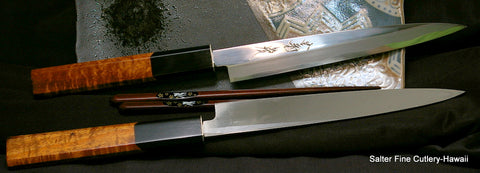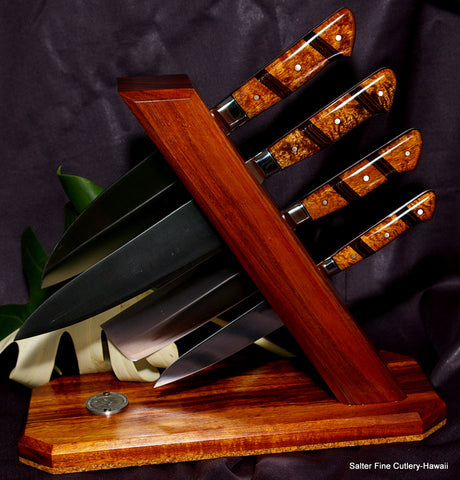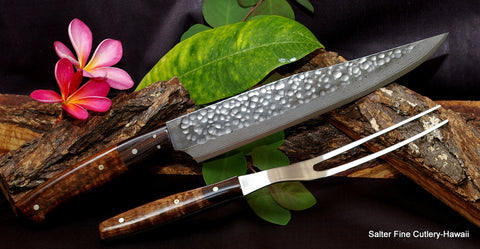Today we will continue with other specialty knife types that may be a good addition for your own meal and cooking preferences. Once you have a couple basic all-purpose knives, the extra knives you opt for should fit your personal cooking style and needs, as well as kitchen storage space, and of course, budget.
Speaking of budget, I can testify from personal experience, that you will be far happier with two or three carefully selected high-quality knives than an inexpensive large set that looks impressive in the department store! With that said.....back to specialty knives.
For large heads of cabbage, go up in size to a 240mm gyuto (which means 'chef knife'), or if cooking for a large family and you have the room and are comfortable with a larger knife, move up to a 270mm chef knife for really big jobs. If doing so however, be sure to also get a larger cutting board as there isn't much point getting a monster knife and trying to use it on a 10x14 cutting board.
Try a sashimi (slicer) in either 210mm or 240mm for most home use if you like to get really clever with thin sliced meats or fish. You don't need to make sashimi (or even like it) to enjoy using a sashimi/slicing knife. They cut so precisely and cleanly making thin slices of cooked or raw beef or chicken. Though, I personally recommend saving your sashimi/slicer for boneless sections of meat!
If you cook a lot of roasts or have large bulk cuts of meat and you would like something to get in close to the bone and filleting. The 'official' intended use of a small heavy knife that only has a cutting edge on one side called a 'deba' is for cleaning fish or dressing poultry. I find it also works great for removing all the meat from around a ham bone so I can then grab another knife and make lots of nice clean slices. Though most of our cooking is small dinners for two, I keep my handy-dandy 180mm deba ready for those large holiday roasts along with my 240mm carving knife.
These are just a few ideas for anyone who is not so familiar with how to use Japanese knives in your everyday western style cooking environment.
In Part 4, we will continue with how to place your order once you know how many knives and the blade styles you want. Please send me your questions and I will address them in future posts.






Leave a comment: